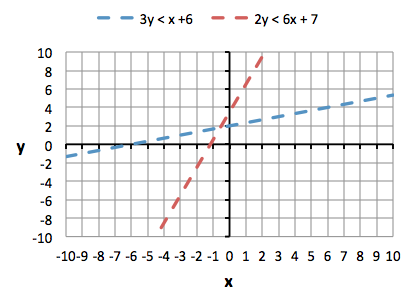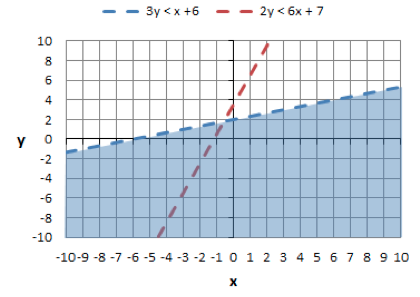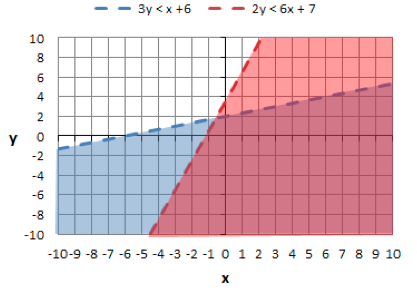Graph this system of linear inequalities. Shade in the correct areas.
 |
3y < x + 6 2y < 6x + 7 |
 |
Click through the slideshow to reveal the answer steps.
|
First rearrange both equations into slope-intercept form: 3y < x + 6 Draw the lines.Both lines will be dotted, and we will shade below both lines, since both equations are "less than" (<).
Now shade in the area below equation 1 because it is less than. (<) Here is the graph with just the shading for equation 1.
Now shade in the area below equation 2 becuase it is less than. (<) Here is the graph with just the shading for equation 2.
Here is the graph with shading for both equations:
Now, choose a point in the overlapping shaded area to check your answer. Let's go with (0,0). If we shaded the graph correctly, the solution should be true for both equations.
This shows that the inequality is correctly shaded. You can also check by choosing another point outside any shaded area and the solution should be false for both equations. |




